Assam, Meghalaya & Sikkim
Tour - 21 days/ 5-day trek
About Assam, Meghalaya and Sikkim
Assam is the only state in north-east India that is almost entirely low lying. It consists largely of the flood plains of the Brahmaputra, one of the largest untamed rivers in the world. The climate is fantastic for rice cultivation, all kinds of tropical crops, bamboo cultivation and fish farming.
Assam is relatively densely populated. The legal part of the population consists of at least 35 million people on an area of 78,000 square kilometers (similar to Czechia, a bit smaller than Austria), the illegal part at least 5 million.
Read more…Read less…
The name Assam comes from the same origin as Siam, which means Thailand. The larger part of the population finds its roots far to the east, from where their ancestors, the Ahums, entered the area in the 13th century. For more than 600 years the Ahums upheld a kingdom in Assam. Especially in the last two centuries the Assamese culture, language and genetics have changed due to frequent immigration from India, Nepal and later Bangladesh.
Before the Ahums settled in the Brahmaputra Plain, other peoples already lived here. The most important of these are the Bodos, who now live mainly in the north and northwest of Assam (population about 1.5 million).
Meghalaya means “the abode of clouds” in Sanskrit. During the British domination of India it was nicknamed “Scotland of the East”. The 1500 m high plateau of Meghalaya, which rises like a wall on the north side of the lowlands of Bangladesh, receives during its annual monsoon an amount of rain that is unparalleled in the world. The central and western parts of the state consist of vast, open grasslands, but in sheltered gorges beautiful, lush forests are found.
Read more…Read less…
The population of Meghalaya is approximately 3.3 million, living on an area of about 22,430 square kilometres (a bit bigger than Israel). This makes it not very densely populated, but denser than most of the mountainous areas of Northeast India. The most important population groups are the Khasi, Garo and Jaintia. The Khasi have a very interesting matriarchal culture, in which the youngest daughter inherits the parental heritage (and the duty to take care of mom and dad). Meghalaya has a predominantly agricultural economy with commercial forestry. The main crops are potatoes, rice, corn, pineapple, bananas, papaya and spices.
Sikkim and neighbouring Darjeeling have a lot to offer to mountain lovers, aficionados of Buddhist culture and trekkers. Darjeeling, the former summer capital of British India has a unique old-world charm and boasts great views from many hotel windows.
It’s next-door neighbour Sikkim – of which it used to be part – is a gem of cultural and natural diversity. Until 1974 an independent kingdom, it is part of India now. It is home to people of very different cultures, most from Nepali descent or originating from Tibetan and Bhutan, such as the Bhutias who brought Buddhism to the area four centuries ago. Thanks to them Sikkim boasts of colorful Buddhist monasteries and Buddhist festivals. The Lepcha’s, until a few decennia ago forest-dwelling animists, hold a unique culture that the Sikkimese government is trying to preserve.
Read more…Read less…
Region
Assam, Meghalaya, Darjeeling & Sikkim
(India
Best Time
March-April & Oct-Nov
No. Of Days
28 days,
5 days trek
Trip Character
Jeep tour with trek
Sleeping Altitude
65 - 3635m
Trek Character
Camping trek
Level: 2
Price
INR XXX/ $ XXX
ABOUT THIS TOUR
On this trip you will visit three of the lesser known areas in the north of India: Assam, Meghalaya and Sikkim.
First you will visit Assam, in the northeast of India. Here you’ll stay in an attractive old tea bungalow in Jorhat, walk through a nature reserve where the rare Hoolock Gibbons – India’s only ape species – live and visit the very special satras (Hindu monasteries) on Majuli Island, located in the Brahmaputra River.
Then you’ll visit the world-famous Kaziranga National Park, known for its large population of one-horned Indian rhinos, but home to a fascinating array of other wildlife, such as wild elephants, wild buffalo’s, several deer species and a very healthy popilation of tigers. Kaziranga is a birdeers paradise as well, with around 500 species of birds.
From Kaziranga you’ll travel up into the mountains of Meghalaya, where you’ll meet the matriarchal Khasi people and walk through lush green ravines to the unique phenomena of living root bridges.
Coming down to the Assam plains you’ll travel to Guwahati, where you’ll board a train to Siliguri, located in the plains at the foot of the Darjeeling Hills. In the nearby ‘tea capital’ Darjeeling – once part of Sikkim – you can enjoy colonial charm and the view of the Himalayas. You will then travel to the border with Nepal where you’ll hike the Shingalila Ridge, a north-south running ridge that offers unparalleled views of India’s highest mountain, the Kangchenjunga (8586m), and other top peaks in Nepal, including Mt. Everest.
After this, you will travel up to the former kingdom of Sikkim, now a state of India. Highlights include a visit to the ancient Buddhist monasteries of Pemayangste and Tashiding, even more views of the highest peaks of the Himalayas and contact with the Sikkimese during your stay in cosy guesthouses and family resorts. From Bagdogra (near Siliguri) you fly back to Delhi.
YOUR custom-made TRIP
The tour described here, as well as the other ones on our website, are mainly meant as suggestions. We would be happy to offer you a travel proposal that fully meets your personal demands and expectations. That means that you choose where you want to go, what level of accommodation and type of transport you want and what activities you prefer.
Please let yourself be inspired by this and other trips on our website and then drop us a line (or call us) to explain your travel wishes. We will be happy to help you put together the perfect trip. You can reach us over e-mail, Messenger, Whatsapp or mobile phone.
EXTENSIONS & VARIATIONS
Apart from the tour as described here, you could consider the following add-ons and changes:
- Stay one or two days longer in Kaziranga, to explore more of the seven different ranges (parts) of the park, and increase your chances of a tiger sighting.
- Travel further north – which means: higher – into the Sikkimese Himalayas and explore the isolated ‘Tibetan’ hamlets of Lachung and Lachen.
- Do a more challenging trek instead of the Shingalila Ridge trek. For instance, the Goecha La Plus trek. On this 12-day trek you sleep in trekkers tents while a walk-along cook prepares your meals. You walk longer distances, climb higher but the rewards are even better views of the big guys.
- If trekking is not your cup of tea we can show you some of the beautiful mountain forests, off-road villages and majestic views of the Himalayas on day walks.
ITINERARY
-
.fa-info {color: #1146a9;}.fa-info:hover {color: #387dff;}Day 1: Delhi ✈︎ Jorhat
The flight to Jorhat takes 2.5 hour. You will be greeted by our guide and driver at Jorhat airport. Jorhat is specially famous for its tea plantations, many of them dating back to the British time. The tea garden managers were housed in amazing ‘tea bungalows’ on stilts. In one of those, Chameli Memsaab Tea Bungalow, you will spend the night. Altitude 115m. -
Day 2 & 3: In Jorhat
Early morning you'll take walk in Gibbon Sanctuary trying to spot Hoolock gibbons, India's only ape species. Or you can opt for a boat ride to an island in the Brahmaputra to meet the ‘forest man’ of India, who single-handedly transformed a barren island into a reserve forest by planting trees for more than 35 years. In the afternoon you can visit a tea garden and factory. Altitude 115m. -
Day 4: Jorhat - Majuli Island (1 h car, 1.5 h ferry)
You'll cross the mighty Brahmaputra River from Neemati Ghat to idyllic Majuli island. Altitude 115 → 80m. -
Day 5: On Majuli Island
Today you'll be exploring the satras of Majuli. These are Hindu monasteries where monks work, worship and dance together. The dances are enactments of the ancient Hindu scriptures, choreographed by the 16th century saint Sankardev. Monks will be performing these dances for you. Altitude 80m. -
Day 6: Majuli Island - Kaziranga N.P. (3 h)
After crossing the the river again, you ride west towards Kaziranga National Park, a UNESCO World Heritage site. This beautiful park houses almost 2500 Indian one-horned rhinos, along with many other rare animal and bird species including the tiger. In the afternoon you'll do you first jeep safari inside the park today accompanied by a naturalist. Altitude 80m. -
Day 7 & 8: In Kaziranga
Today and tomorrow you will explore the park by jeep twice daily. Kaziranga has six different ranges, each with their own landscape and chances of seeing particular wildlife. Altitude 80m. -
Day 9: Kaziranga - Shillong (6 -7 h)
Leaving the Assamese plains, you follow hilly roads to Shillong, the capital of the state of Meghalaya, which means “the abode of the clouds.” Located at an 1500m, Shillong once was the summer capital of British India, and the colonial ambience is still there. Altitude 80 → 1500m. -
Day 10: In Shillong
Today you can visit Shillong's sights, such as Shillong Peak (good views), the Elephanta falls, idyllic Ward's Lake, and 19th century Mary’s cathedral. Altitude 1500m. -
Day 11: Shillong - Cherrapunjee (4 h)
Traveling south, you'll reach Cherrapunjee, locally known as Sohra, a tiny village which long held the record of receiving the highest rainfall on earth. And you'll take a walk in the well-conserved 'sacred' forest of Mawphlang. Altitude 1500 → 1400. -
Day 12: In Cherrapunjee
Today you'll explore the beautiful forested ravines of Cherrapunjee and discover the unique phenomena of its fairy-tale natural root bridges. Altitude 1400m. -
Day 13: Cherrapunje - Dawki - Mawlynnong (4 -5 h)
Moving closer to Bangladesh, you'll visit the spectacular Seven Sisters Falls, the Mawsami limestone caves, and a magnificent view point of Bangladesh. After visiting Dawki, on the Indo-Bangladesh border you'll check in to a homestay in India's 'cleanest village' Mawlynnong. Altitude 1400 → 25 → 475m. -
Day 14: Mawlynnong - Guwahati (6 -7 h)
After visiting another, particularly beautiful living root bridge, you drive to Guwahati, the capital of Assam. Here, the large, 15th century Kamakhya Temple as well a little Shiva temple on a tiny island in the Brahmaputra can be visited. Altitude 475 → 75m. -
Day 14: Mawlynnong - Guwahati (6 -7 h)
After visiting another, particularly beautiful living root bridge, you drive to Guwahati, the capital of Assam. Here, the large, 15th century Kamakhya Temple as well a little Shiva temple on a tiny island in the Brahmaputra can be visited. Altitude 475 → 75m. -
Day 15: Guwahati - Siliguri - Darjeeling (6 h train, 2.5 h car)
Early morning you'll board the train to Siliguri in NW-Bengal. Our local guide and driver will be waiting, and take you up to Darjeeling, situated at 2030m. Altitude 75 → 2030m. -
Day 16: In Darjeeling
Early morning you will board to so-called Toy Train, a narrow-gauge coal-fuelled steam train from the old days, upt Ghoom, whether you'll visit the area's oldest Buddhist temple. Later, you can visit the main bazaar of Darjeeling, the very interesting Mountaineering Institute and the Tibetan Refugees Handicraft Centre. Altitude 2430m. -
Day 17: Darjeeling – Rimbik & trekking to Gudrum (4 h driving, 3 - 4 h walking)
A scenic ride brings us to Rimbik, the start of our trek. Along today’s undulating trail we first pass farm houses and witness village life. Then, accompanied by the sounds of birds and cicadas, we enter the forest with rhododendron, magnolias and oaks. Camp is at picturesque Gurdum. Altitude 2430 → 2200 → 2350m. -
Day 18: Gudrum - Sandakphu - (7 - 8 h walking)
This is the most strenuous day of the trekking but also a very enjoyable one! The path climbs uphill through the forest until Sandakphu, with spectacular views of four of the world’s five highest peaks: Everest, Kanchenjunga, Lhotse and Makalu. Because this village can also be reached by jeeps we camp a little further on. Altitude 2350 → 3635. -
Day 19: Sandakphu - Sabargram (6 h walking)
Enjoy breath-taking views of the entire Kanchenjunga Range at sunrise. Today’s relaxed walk along the Singalila Ridge is hard to beat due to the sheer grandness of its views and the vastness of the surrounding landscapes. The trail is lined with rhododendrons, magnolias and wildflowers, which all bloom in spring. Altitude 3635 → 3600m. -
Day 20: Sabargam - Phalut - Sammanden (22km/ approx. 7 h walking)
Both mountains and sunrise are visible from our hilltop camp. First we walk along the ridge till Phalut, followed by a long downhill stretch through the forest and along picturesque Gorkhey to a clearing at Sammanden. Altitude 3600 → 2500m -
Day 21: Sammanden - Shikola - Rimbik (6 - 7 h walking) & car to Darjeeling (4 h drive)
First we descend through the forest, then pass some villages until we reach the valley floor at Srikhola. We continue to Rimbik. Transfer by car to Darjeeling. Altitude 2500 → 2200 → 2430m. -
Day 22: Darjeeling - Rinchenpong (6 h)
Today a scenic drive through wooded slopes, tiny villages will take you to Rinchenpong (2040m) village and check into the historic Yangsum farm, built in 1833 and renovated in 1966. Altitude 2030 → 1420m. -
Day 23: In Rinchenpong
You can take walks around the farm, visiting a local monastery and the Lepcha Heritage House. The Lepchas are probably the earliest inhabitants of Sikkim, migrating from Southern Bhutan, originally animists, these days often converted to Buddhism. Altitude 1420m. -
Day 24: Rinchenpong - Pelling (44km/ 3-4 h)
Pelling (1980m) will be your destination of today. On the way, you’ll visit Sikkim’s finest Buddhist monastery, Pemayangtse, built in 1705. It has a beautiful architecture and a rare collection of antiques. Altitude 2445 → 1800m. -
Day 25: Pelling - Rumtek (5 h)
Today a drive for 5 hours will take you to Rumtek, not far from Sikkim's capital Gangtok. On the way we visit another spectacular monastery, Tashiding Gompa, built in 1641 by a famous sage. Tonight you stay at a very pleasant family-run ecoresort. Altitude 1800m. -
Day 26: In Rumtek & visit Gangtok
The large monastery of Rumtek was constructed in the sixties by the abbot of the Karmapa sect and his followers, who had to flee Tibet in 1559. After visiting this interesting gompa, you can spend the whole day exploring Gangtok, one of India's most sloping cities, mostly on foot. There is a lot to see and visit, not in the last place the many 'hip' restaurants and bars. Altitude 1620 → 1650 → 1620m. -
Day 27: Rumtek - Bagdogra ✈︎ Delhi (drive 5 h, flight 2 h)
After breakfast you descend to Bagdogra where you check in for the flight to Delhi. It depends on the timing of your international flight whether you will need an overnight stay in Delhi. In the latter case we can arrange this for you.
HIGHLIGHTS OF THIS TOUR
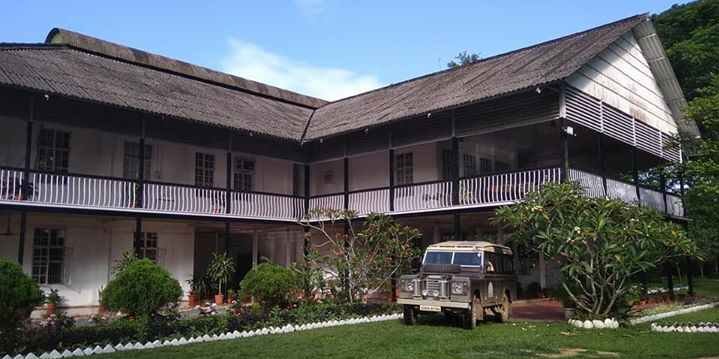
Chameli Memsaab BUNGALOW
The Chameli Memsaab Tea Bungalow is a so-called chang bungalow, a stately, rustic building of massive wooden bars and cottage-style masonry on stilts. The word chang is Assamese and refers to the fact that it is built on stilts. This served the purpose of avoiding flooding as well as avoiding in-door encounters with the wild animals that would regularly cross the tea estates, such as elephants, tigers leopards and king cobras. The building’s well-kept appearance belies more than a century of age. Once upon a time the manager of the tea estate lived here, now it is a hotel. Its owners have taken utmost care to preserve the erstwhile style and atmosphere.
Tea Gardens of Assam

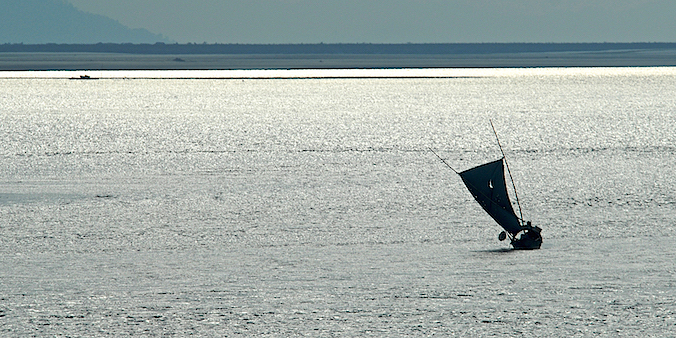
Brahmaputra CROSSING
Satras of Majuli island
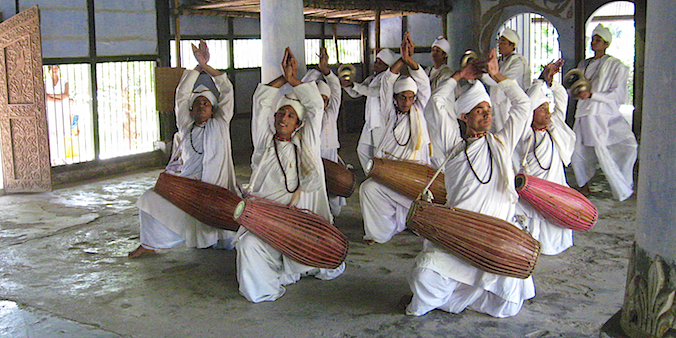
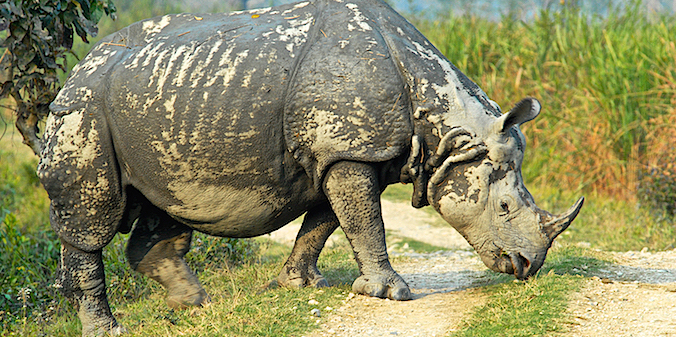
Kaziranga National Park
shillong
Shillong is the capital of the state of Meghalaya. It is located at an altitude of about 1500m on the edge of the Meghalaya plateau. The mountainous terrain translates into winding roads that are also often clogged. But Shillong is a pleasant and interesting place. Once this was the summer capital of British India. This was at the time when Calcutta was the actual capital (before it was moved to Delhi in 1907). In the scorching hot summers the British moved with their entire civil service to Shillong, where the cooler and rainy climate undoubtedly made them feel at home. Nowadays, many “colonial” buildings remind us of this time.
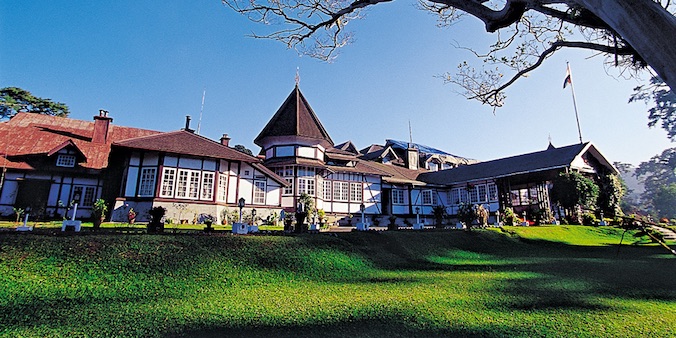

Cherrapunjee
LIVING BRIDGES OF MEGHALAYA
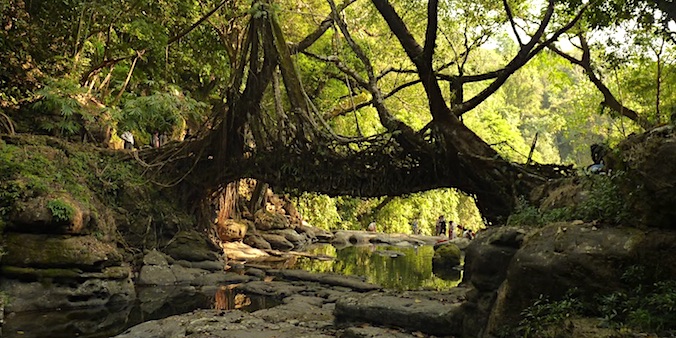

Mawlynnong & Dawki
Guwahati
The town of Darjeeling was built by the British in the middle of the eighteenth century, initially as a place of rest and recuperation for their troops. But over time it became one of the most important hill stations (holiday resorts in the mountains) of India. During the time when Kolkata was the capital of British India, Darjeeling, situated at over 2000m, functioned as a summer getaway for the Brits, who had a hard time enduring the heat of sea-level Kolkata. Darjeeling has retained much of the ‘old world’ charm that is so typical of British hill stations. Apart from exploring the steep and winding roads of the main bazaar, its is worthwhile to explore some of the Buddhist temples, notably Ghoom Monastery, the oldest in the region, as well as the very interesting Mountaineering Institute.
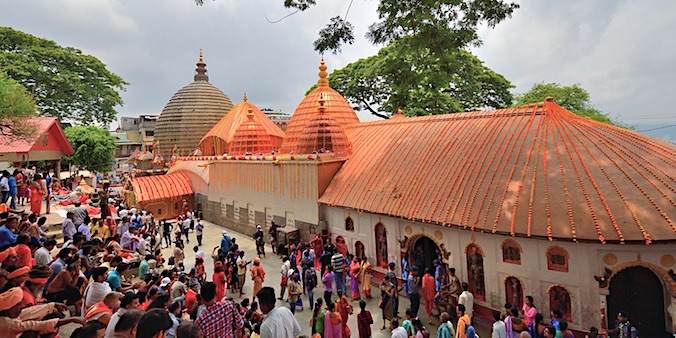
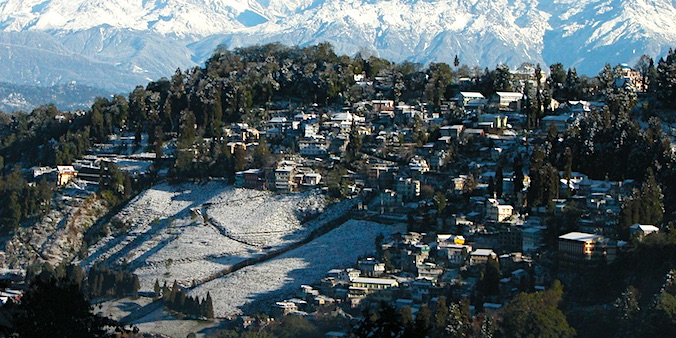
DARJEELING
The town of Darjeeling was built by the British in the middle of the eighteenth century, initially as a place of rest and recuperation for their troops. But over time it became one of the most important hill stations (holiday resorts in the mountains) of India. During the time when Kolkata was the capital of British India, Darjeeling, situated at over 2000m, functioned as a summer getaway for the Brits, who had a hard time enduring the heat of sea-level Kolkata. Darjeeling has retained much of the ‘old world’ charm that is so typical of British hill stations. Apart from exploring the steep and winding roads of the main bazaar, its is worthwhile to explore some of the Buddhist temples, notably Ghoom Monastery, the oldest in the region, as well as the very interesting Mountaineering Institute.
DARJEELING'S TOY TRAIN
The Darjeeling Himalayan Railway (DHR), also known as the Toy Train, is a narrow gauge railway that runs between New Jalpaiguri and Darjeeling. Built between 1879 and 1881, it is about 88 km long. It climbs from about 100 m (328 ft) above sea level at New Jalpaiguri to about 2,200 m (7,218 ft) at Darjeeling, using six zig zags and five loops to gain altitude. Six diesel locomotives handle most of the scheduled service, with daily tourist trains from Darjeeling to Ghoom – India’s highest railway station – and the steam-hauled Red Panda service from Darjeeling to Kurseong. On 2 December 1999, UNESCO declared the DHR a World Heritage Site.

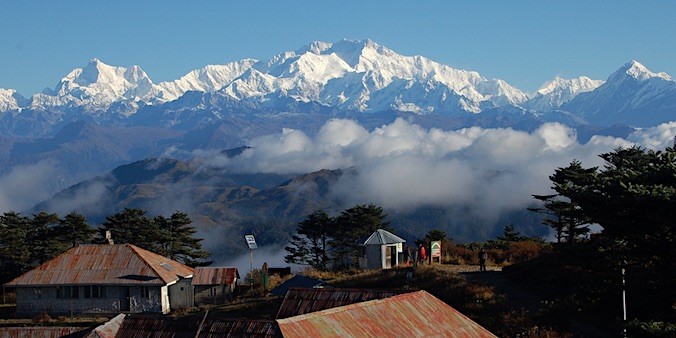
Singalila Ridge Trek
Yangsum Farmhouse
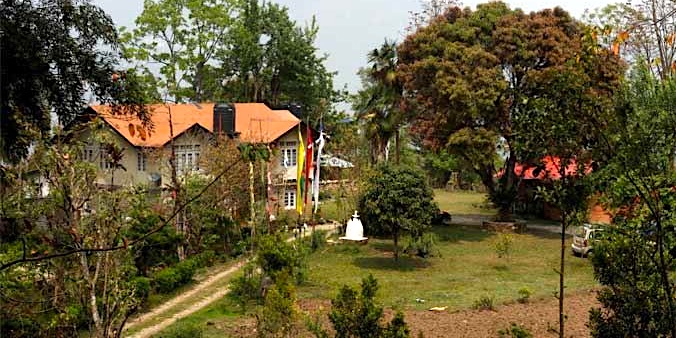

Pemayangtse Monastery
Pemayangtse Gompa was built by Lama Lhatsun Chempo in 1705, and it is one of the oldest monasteries in Sikkim. It was expanded by the third Chogyal (king) of Sikkim Chakdor Namgyal, who was considered the third incarnation of Lhatsun Chenpo. The monastery follows the Nyingma order (‘Old sect’) and is the main monastery of this order in Sikkim. The monks of the monastery are normally chosen from the Bhutias (ethnic Tibetans living in Sikkim since the seventeenth century). The top floor of the monastery houses a rare work of art made of wood, a seven-storey representation of Guru Rinpoche’s Celestial Palace (known as ‘Sanghthokpalri’ or ‘Zandog-palri’). Guru Rimpoche, also known as Padmasambhava, was one of the most important spreaders of Buddhism in the eighth century.
Teen Taley Eco Resort
Teentaley Eco Resort, located in eastern Sikkim, offers a serene and authentic rural experience for its guests. The resort is set in a picturesque bamboo grove, surrounded by the earthy scent of clay and cardamom, creating an idyllic atmosphere. Visitors have the opportunity to stay with a welcoming host family, enjoy organic cuisine, and immerse themselves in ancient customs and crafts. The resort also offers the chance to be part of a vibrant community, providing a contrast to the nearby bustling city of Gangtok. The resort boasts spacious gardens, a rustic farmhouse, and secluded forests, creating a paradise where the sound of birdsong welcomes the day and tranquility lulls guests to sleep.
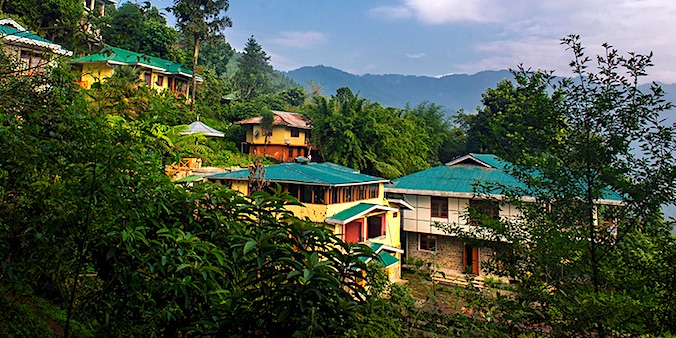
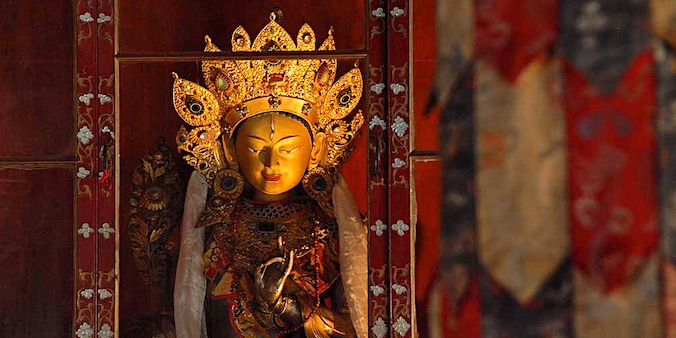
Rumtek Monastery
Gangtok

